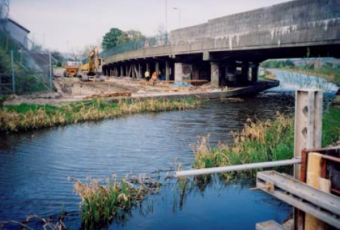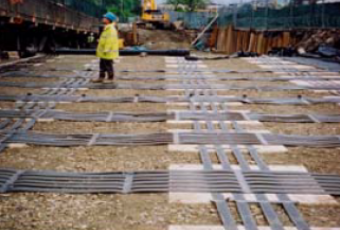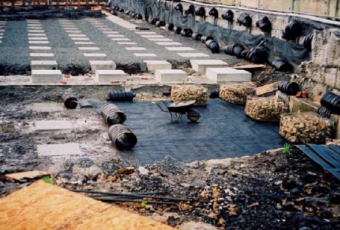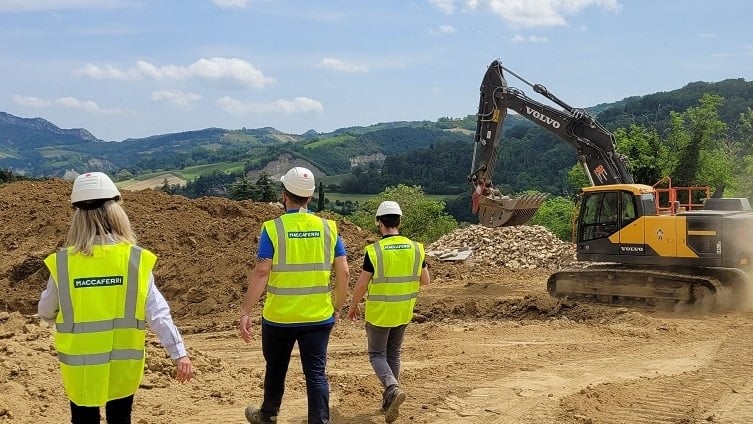Reinforced Soil Walls and Slope Reinforcement
2020
ROCHDALE - GREATER MANCHESTER - United Kingdom
ROCHDALE MBC
KINGSWAY CANAL BRIDGE : BRP
Problem
An existing reinforced concrete bridge structure was to be replaced with a new bridge structure and approach embankments, instead of the existing viaduct. The route had to be kept open to traffic at all times therefore a temporary diversion road and bridge had to be constructed adjacent to the existing bridge to allow demolition and new construction. The restricted space available for the temporary road, and the poor quality of the underlying stratum, (peats over soft clays), meant a piled Basal Reinforced Platform (BRP) was required. The temporary road footprint would part remain under the shoulder of the new road embankment. This meant that the BRP reinforcement would have to be constructed to allow for support under the permanent structure and possible redundancy and removal under portions of the temporary diversion route.
Solution
Maccaferri proposed that the Paralink strip system be used instead of the clients proposed multiple layer blanket system. In conjunction with Stent Piling , Maccaferri proposed a revised piling layout and strip system BRP. This was promoted by Galliford Northern to the client and approval in principle was granted. The strip system allows the main transverse reinforcement elements to be threaded between the support columns of the existing bridge structure. This meant that the supporting BRP under the permanent embankment footprint could be considered as continuous. In addition to the BRP a 2.5m vertical retaining structure was required to support the temporary road above the level of the permanent embankment area. Maccaferri incorporated a Gabion Terramesh reinforced soil structure into their BRP design above the temporary road. The tough protective coating around the Paralink strips meant they could be used in direct contact with the pile caps without concerns of alkalinity degradation or installation damage due to the rough edges of the pile caps.




